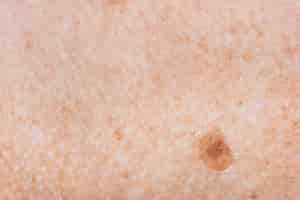Birthmarks are common skin features that can appear on a person’s body shortly after birth or develop during infancy. These marks often lead to various interpretations and myths about their meanings. In this article, we will explore the different types of birthmarks, their potential causes, and the various cultural and historical interpretations associated with them.

I. Types of Birthmarks
There are two primary categories of birthmarks: vascular birthmarks and pigmented birthmarks.
A. Vascular Birthmarks
- Hemangiomas: These are raised, red or purple marks caused by an abnormal buildup of blood vessels. They often appear shortly after birth and may grow in size before gradually fading.
- Port-Wine Stains: Port-wine stains are flat, dark red or purple birthmarks that typically persist throughout a person’s life. They are caused by an abnormal development of blood vessels near the skin’s surface.
- Salmon Patches: Also known as stork bites or angel kisses, salmon patches are flat, pink or red marks that often appear on a baby’s face or neck. They are caused by dilated blood vessels and usually fade with time.
B. Pigmented Birthmarks
- Moles (Nevi): Moles are dark, raised spots on the skin caused by clusters of pigment cells. They can be present at birth or develop later in life.
- Café-au-Lait Spots: These are flat, light brown birthmarks that can vary in size and may appear in multiple locations on the body.
- Mongolian Spots: Mongolian spots are bluish-gray birthmarks that often appear on the lower back or buttocks of babies with darker skin tones. They usually fade as a child grows.
II. Causes of Birthmarks
The exact causes of birthmarks are not always known, but they can result from various factors.
A. Genetic Factors: Some birthmarks, such as moles and café-au-lait spots, may be inherited genetically.
B. Vascular Abnormalities: Vascular birthmarks are often the result of abnormal blood vessel development in the womb.
C. Hormonal Changes: Hormonal fluctuations during pregnancy may influence the development of birthmarks in some cases.
D. Environmental Factors: Certain environmental factors, such as exposure to chemicals or radiation during pregnancy, may contribute to the formation of birthmarks.
III. Cultural and Historical Meanings of Birthmarks
Throughout history, birthmarks have been subject to various interpretations and superstitions in different cultures.
A. Positive Beliefs
- Lucky Symbols: In some cultures, birthmarks are considered lucky symbols. For example, a mole on the cheek is believed to bring wealth and prosperity in Chinese culture.
- Signs of Reincarnation: In some regions, people believe that birthmarks are signs of reincarnation, indicating that the individual had a previous life.
B. Negative Beliefs
- Portents of Misfortune: In certain cultures, birthmarks are viewed as ominous signs, foretelling misfortune or bad luck.
- Witchcraft and Evil Spirits: Historically, some societies associated birthmarks with witchcraft or the influence of evil spirits.
IV. Medical Considerations
While birthmarks can have cultural and historical significance, it’s essential to prioritize medical evaluation and care when necessary. Some birthmarks may require treatment due to potential health risks or cosmetic concerns.
A. Treatment Options
- Medical Observation: Many birthmarks, such as salmon patches and some moles, may not require treatment and can be monitored by a healthcare professional.
- Laser Therapy: Laser treatments can be used to fade or remove certain types of birthmarks, like port-wine stains.
- Surgical Removal: Surgical removal may be recommended for large or potentially cancerous birthmarks.
B. Psychological Impact
Birthmarks, especially when prominent, can impact an individual’s self-esteem and body image. It is essential to address any psychological concerns and provide emotional support when needed.
In conclusion
birthmarks come in various forms and have diverse cultural and historical meanings. While some consider them lucky symbols, others see them as omens of misfortune. Regardless of their interpretation, it’s crucial to prioritize medical care and emotional support for individuals with birthmarks to ensure their overall well-being and confidence.
